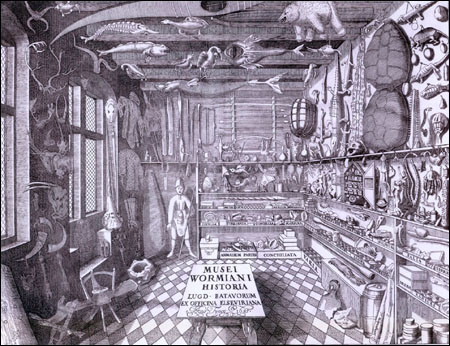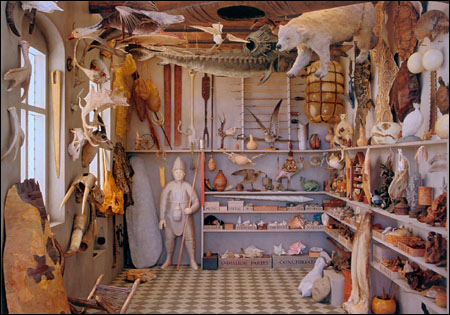Early museum re-created in Science Center installation
Chamber of curiosities offers answers, raises questions
The Danish professor of medicine Ole Worm (1588-1654) believed, as did his more enlightened contemporaries, that learning comes about through the observation of nature – “through empiricism and experiment” – and not just through the study of texts. Worm firmly believed that vision was the most trustworthy sense for natural history investigations.


And that is why he assembled a museum in his Copenhagen home. Filled with ethnographic curiosities, skulls, stuffed animals, and the latest in optical and experimental devices, the early museum was as beautiful in its way as it was informative.
We know what the museum looked like from the detailed frontispiece in the 1655 catalog called “Worm’s Museum, or the History of Very Rare Things, Natural and Artificial, Domestic and Exotic, Which Are Stored in the Author’s House in Copenhagen.”
‘Bringing Nature Inside: 17th Century Natural History, Classification, and Vision,’ Special Exhibition Gallery, Science Center, room 251, 1 Oxford St., Cambridge. Now through Jan. 14, 2005. Monday through Friday, 10 a.m. to 4 p.m., second and third Sundays of November and December, 1-5 p.m.
Now, Rosamond Purcell has fashioned a meticulous re-creation of this 17th century world-within-a-world with “Bringing Nature Inside,” which can be seen at the Special Exhibits Gallery at the Science Center, room 251. (The re-creation of Olaus Worm’s collection was originally part the exhibition “Rosamond Purcell: Two Rooms,” organized by the Santa Monica Museum of Art and curator Lisa Melandri.)
To conjure up the private museum of the Danish professor of medicine, Purcell used ethnographic objects and natural history specimens borrowed from collections at Harvard and elsewhere in the United States. In re-creating Worm’s world, Purcell, an installation artist, and Sara Schechner, the David P. Wheatland Curator of the Collection of Historical Scientific Instruments, explore not only the place of Worm’s cabinet among other early museums and the ways he organized his collection, but also the issues that arose in representing nature through the sense of sight.
“Bringing Nature Inside: 17th Century Natural History, Classification, and Vision” is on view through January.




